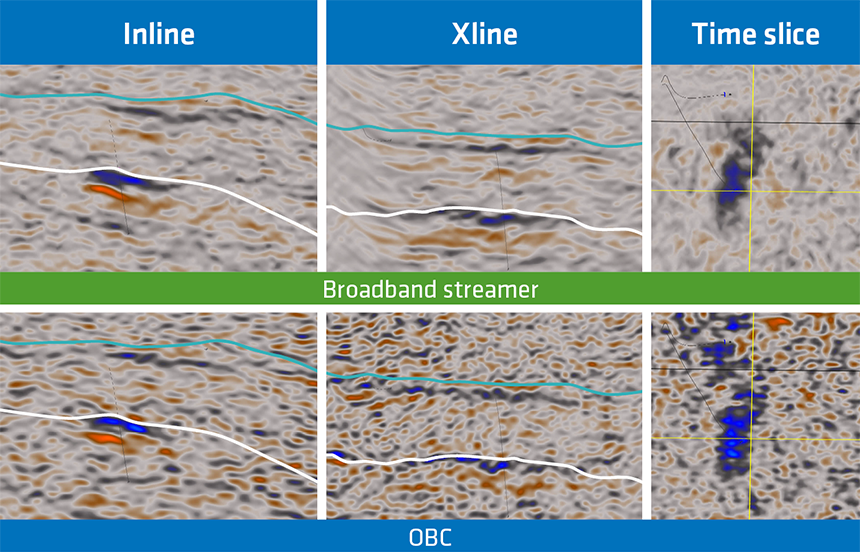The Gullfaks asset has been running a successful seismic monitoring program for decades. Time-lapse seismic monitoring is a key technology to secure future field production. Since 1995, eight vintages of streamer data and nine Ocean Bottom Seismic (OBS) surveys have been acquired at regular intervals.
The 4D repeatability and data quality have directly benefitted from evolving technology. Recent broadband multisensor streamer solutions have delivered better, clearer images with a higher level of detail than conventional seismic. While broadband has become a standard for 3D seismic interpretation, its application is still new for time-lapse seismic and the number of case studies is limited.
Comparing GeoStreamer and OBC Data
In 2019 Equinor ran a time-lapse broadband proof of concept, using the latest 2016 and 2019 GeoStreamer surveys, which together with Ocean Bottom Cable (OBC) seismic data, provides an extensive dataset for interpretation and strengthens understanding of the potential broadband 4D uplifts for future application.
Two datasets were acquired and used in this study. The broadband multisensor streamer dataset was used for the main analysis, while the OBC seismic was used as a reference dataset.
The figure below shows 4D differences in inline and crossline sections through the target area. Overall, 4D effects are similar and match the well production history: the Shetland Formation (light green) near-wellbore pressure build-up effect between 2016 and 2019 results in acoustic softening. This 4D effect, positioned slightly on the side of the well, is mainly observed in the inline direction. The 4D effect in the Cook Formation (white) is dominated by a pressure reduction with the expected hardening of the 4D signal. This can be seen in both inline and crossline directions. The broadband and OBC data show similar continuity and extent of the hardening at the Cook level. The broadband dataset gives better amplitude discrimination of the 4D effect, lower background noise, and brighter and more isolated amplitudes of the 4D effects on the Cook Formation.
Overall, at this stage, good continuity and improved resolution in the broadband data is observed. Improvement of the fine details and reduction in the 4D noise increases confidence in the 4D results. Minimizing the uncertainty of the reservoir models can help to improve the production plan.

Future Strategy
The current Gullfaks license period continues to 2036. Future field plans include further development and maturation of the gas and oil reserves. The Gullfaks 4D strategy aims to acquire a new seismic survey every three years, to validate and monitor the existing reservoirs, and to find new targets or bypassed hydrocarbons.
More work is needed to fully understand the benefits and take advantage of the broadband 4D data on the Gullfaks field. However, a conclusion can be made that the availability of modern, high-quality seismic data enables more thorough analysis and provides new insights into this established area. Employing up-to-date acquisition and processing technologies, including broadband solutions, sets a path towards future high-resolution 4D projects.